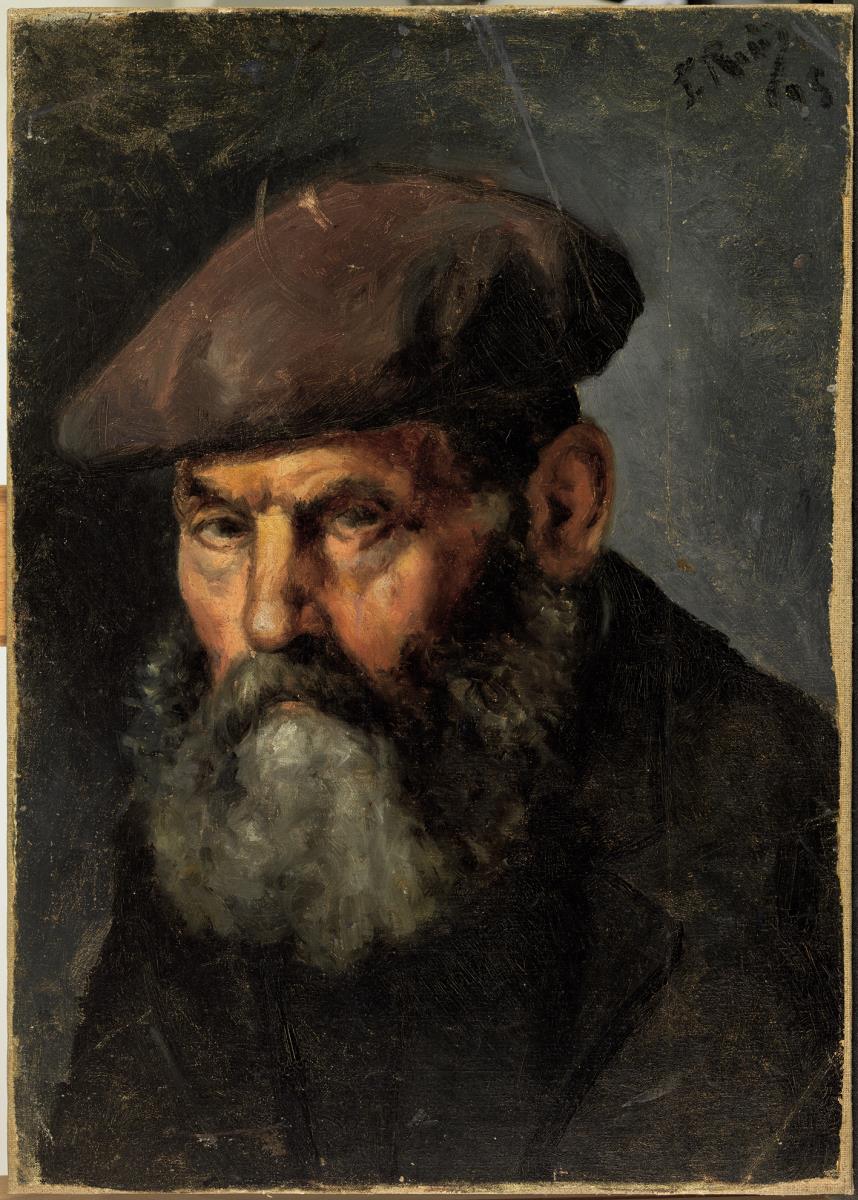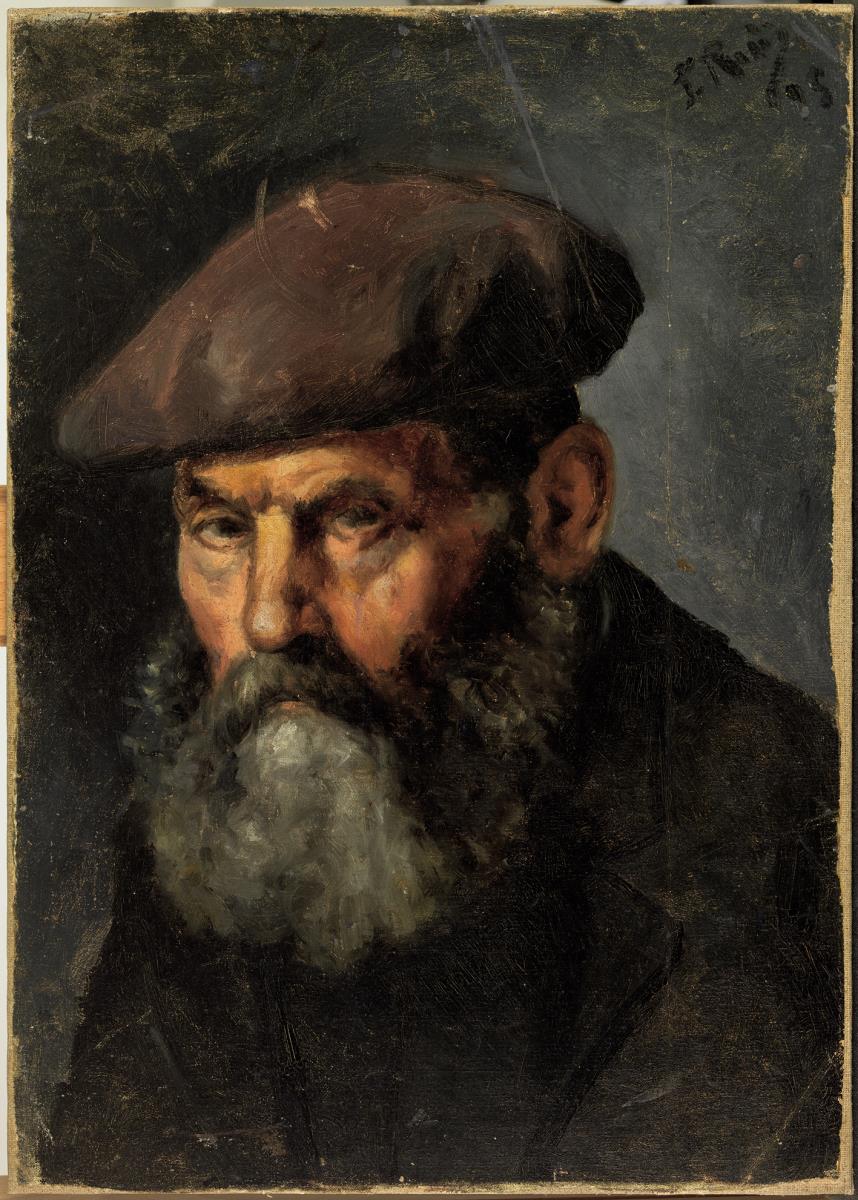Man in a Beret

Man in a Beret
Man in a Beret
Despite the fact that during his years of artistic training in Corunna Picasso followed the strict academic rules characterising the teaching models of the period, his portraits and landscapes would soon begin to stand out for their expressiveness. Three works in the museum’s permanent collection exemplify the depth of his portraits: "Man in a Beret", "Old Man" (MPB 110.014) and "Man with a Beard".
In these works Picasso doesn’t only portray the expressiveness of the figures with great precision but also experiments with size and format. The first two canvases, while not excessively large, are larger than those of his previous works, whereas the third portrait is painted on a tambourine.
"Man in a Beret" is a particularly significant example of the artist’s portraits of this period. Picasso’s sitters included friends and relatives but also strangers, highlighting specific features that could betray their personality. In this case the dryness and reddish colour of his complexion, which seems to be tanned by the sun and wind, intensify the character’s expression and capture the essence of outdoor life.
Picasso doesn’t describe his clothes, but draws viewers’ attention to the face, in particular to the thickness of the beard, depicted in a range of shades from white and grey to brown, and to the intensity of his gaze. The brownish shades of the beard merge into those of the jacket, gradually passing from the edge of the face into the dress.
The figure is shown in semi-profile and turns his face to look directly at the spectator, a characteristic pose in Spanish portraiture that Picasso was then becoming acquainted with. Man in a Beret is thus a fine example of the young artist’s early interest in the portrait genre that would continue throughout his career.
Located in
CP Sala 0250.5 cm x 36 cm
Gift of Pablo Picasso, 1970
MPB 110.058






